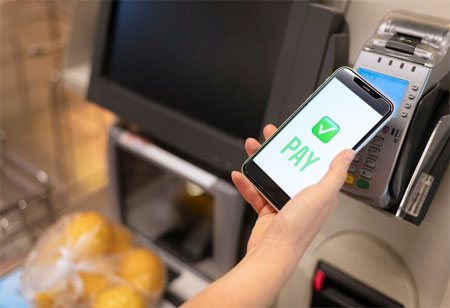
In the fast-paced and competitive world of retail, where every transaction counts, the difference between securing a sale and missing an opportunity hinges on the efficiency and reliability of payment systems. Whether it's the swift swipe of a credit card, the tap of a mobile device, or the click of a mouse, the seamless processing of transactions has ushered in a new era of unparalleled convenience and speed in commercial exchanges.
Beneath this apparent simplicity lies a complex web of technologies and protocols that ensure the smooth flow of funds. This article dives into how retailers can strategically harness cutting-edge payment systems to facilitate seamless transactions and drive long-term success and customer satis- faction.
The integrity of instant transactions
As consumers increasingly favor speed and simplicity when checking out, retailers invest in up-to-date payment technologies to keep pace. Traditional cash registers are giving way to advanced point-of-sale (POS) systems that bring the power of computers to bear on transactions. These systems connect sales data with inventory information, providing up-to-the-minute stock and pricing details that help retailers optimize sales.
For all their sophistication, POS systems are only as good as the underlying payment technologies they rely on. Inaccurate or slow processing can impede sales and prevent customers from abandoning purchases altogether. Retailers must select secure, reliable, and rapid transaction processing payment systems.
Types of retail payment systems
Here are some of the most common retail payment systems that have revolutionized the way we transact:
Traditional credit/debit card processing
The most widely used form of payment in retail stores is still credit and debit cards. Depending on the merchant's agreement with their bank or financial institution, a percentage or flat fee per transaction is charged to the retailer for processing payments.
Mobile payments
With the rise of smartphones and innovative mobile payment systems such as Apple Pay, Google Wallet, and Samsung Pay have become increasingly popular. These systems use near-field communication (NFC) technology to allow customers to make quick and safe transactions by simply tapping their device at a compatible terminal.
Online payments
In today's digital age, online shopping has become the norm for many consumers. Payment gateways like PayPal and Stripe allow retailers to process credit/debit card payments and e-wallet transactions securely on their websites.
Contactless payment cards
Contactless payment cards have a built-in chip that allows customers to make payments by tapping or waving the card near a compatible terminal. This technology eliminates the need for swiping or inserting a card, making transactions quicker and more convenient.
Electronic check payment
An electronic check payment, or e-check, allows customers to make payments by entering their checking account information online. Customers who want to avoid using credit/debit cards or e-wallets often prefer this method.
Choosing the right payment system
When selecting a payment system for their business, retailers must carefully assess their specific requirements and financial constraints. It is crucial to consider factors such as transaction fees, the robustness of security features, the simplicity of integration with existing systems, and alignment with customer preferences to ensure a smooth payment process.
Given the rapid evolution of technology, retailers need to remain agile and proactive in updating and enhancing their payment systems to meet the market's ever-changing demands. This strategic financial approach improves the customer experience and positions retailers ahead of the competition.
Navigating the challenges of payment system integration
Integrating a new payment system into a retail operation can pose significant challenges. These challenges encompass various aspects, including the technical setup intricacies, compliance issues that need to be navigated, comprehensive employee training, and the critical factor of customer adoption.
Retailers undertaking this endeavor must meticulously strategize the integration process to guarantee minimal disruption to their business operations. Simultaneously, they must prioritize offering secure and efficient payment options to their valued customers to enhance overall satisfaction and trust in their brand.
Future trends in retail payment systems
The future of retail payment systems is poised to witness notable transformations driven by technological advancements, evolving consumer preferences, and regulatory framework developments. As this dynamic landscape unfolds, retailers are encouraged to be keenly aware of emerging payment solutions, such as blockchain technology and cryptocurrencies.
It is crucial for them to thoroughly evaluate the potential impacts on their business operations and customer interactions. Embracing these novel trends early provides a competitive advantage and strategically situates retailers for long-term success in the constantly evolving retail sphere.
Wrapping up
The significance of efficient and reliable payment systems cannot be overstated in today's highly competitive retail industry, where businesses strive for a competitive edge. These payment systems are crucial in shaping the customer experience and influencing repeat business.
Retailers need to dive deep into understanding the nuances of various payment systems available in the market. From traditional methods like cash and card payments to modern options such as mobile wallets and contactless payments, each choice impacts the transaction process and customer satisfaction.
Having the right payment system empowers retailers to shift their focus towards enhancing customer service, building brand reputation, and expanding their business horizons. By embracing innovation in payment technology and staying ahead of the curve, retailers can create a competitive advantage that propels them toward sustainable growth and success in the dynamic retail landscape.
We use cookies to ensure you get the best experience on our website. Read more...